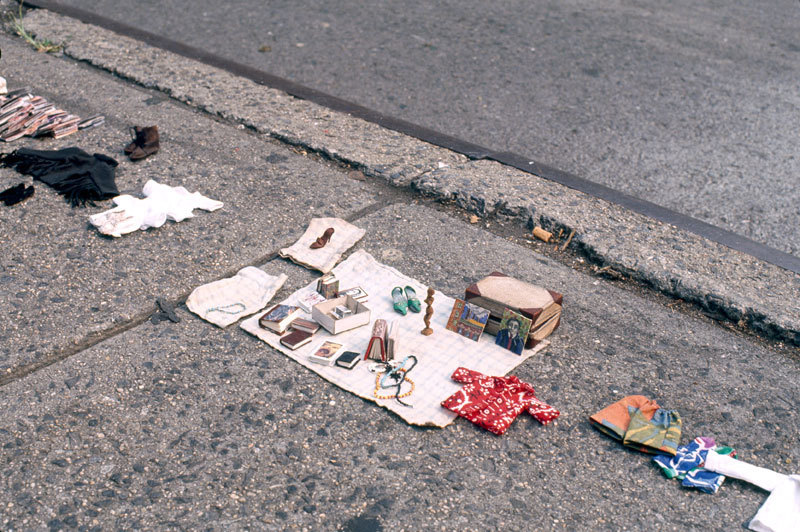 On first impression, Charles LeDray’s work in his recent mid-career retrospective, “Workworkworkworkwork,” at the Whitney Museum of American Art in New York, could be described as, for lack of a better word, cute. LeDray’s work is largely comprised of thousands of miniatures: suits, ceramic vessels, magazines, beds, books. The detritus of urban life. Adding to this characterization is the curious biographical detail that LeDray, who previously worked as a security guard at the Seattle Art Museum, is a largely self-taught artist with his sewing skills apparently learned from his mother. However, the longer one stays at the exhibition, the more a curious sense of disorientation sets in. Perhaps it is the miniature sculptures made from human bone. The thousands of glazed ceramic vessels, each with their own individual characteristics, created using a traditional potters wheel. The 588 objects arranged in 22 groupings that were inspired by street vendors in New York. LeDray’s art, with its extreme materiality, emphasizes the manual work entailed in the creation of artwork and exposes the benefits of what intense work can bring and the sacrifices entailed in the process. In much of his work, LeDray underscores what is necessarily hidden when we go to work, which is often expressed through choices of clothing. From his construction of a work coat bearing the name, “Charles,” that then bursts out with dresses from within to his series, “Village People,” which is comprised of a variety of hats (from military hats to berets), his work shows what can and, often must, be revealed and hidden about identities by the filters of the working world. Repressed sexuality. Neurotic tendencies. Discarded dreams. LeDray’s art is that of a modern urban artisan with a strangely obsessive-compulsive and manic streak. Hard work.
On first impression, Charles LeDray’s work in his recent mid-career retrospective, “Workworkworkworkwork,” at the Whitney Museum of American Art in New York, could be described as, for lack of a better word, cute. LeDray’s work is largely comprised of thousands of miniatures: suits, ceramic vessels, magazines, beds, books. The detritus of urban life. Adding to this characterization is the curious biographical detail that LeDray, who previously worked as a security guard at the Seattle Art Museum, is a largely self-taught artist with his sewing skills apparently learned from his mother. However, the longer one stays at the exhibition, the more a curious sense of disorientation sets in. Perhaps it is the miniature sculptures made from human bone. The thousands of glazed ceramic vessels, each with their own individual characteristics, created using a traditional potters wheel. The 588 objects arranged in 22 groupings that were inspired by street vendors in New York. LeDray’s art, with its extreme materiality, emphasizes the manual work entailed in the creation of artwork and exposes the benefits of what intense work can bring and the sacrifices entailed in the process. In much of his work, LeDray underscores what is necessarily hidden when we go to work, which is often expressed through choices of clothing. From his construction of a work coat bearing the name, “Charles,” that then bursts out with dresses from within to his series, “Village People,” which is comprised of a variety of hats (from military hats to berets), his work shows what can and, often must, be revealed and hidden about identities by the filters of the working world. Repressed sexuality. Neurotic tendencies. Discarded dreams. LeDray’s art is that of a modern urban artisan with a strangely obsessive-compulsive and manic streak. Hard work.
Image: courtesy Whitney Museum.
